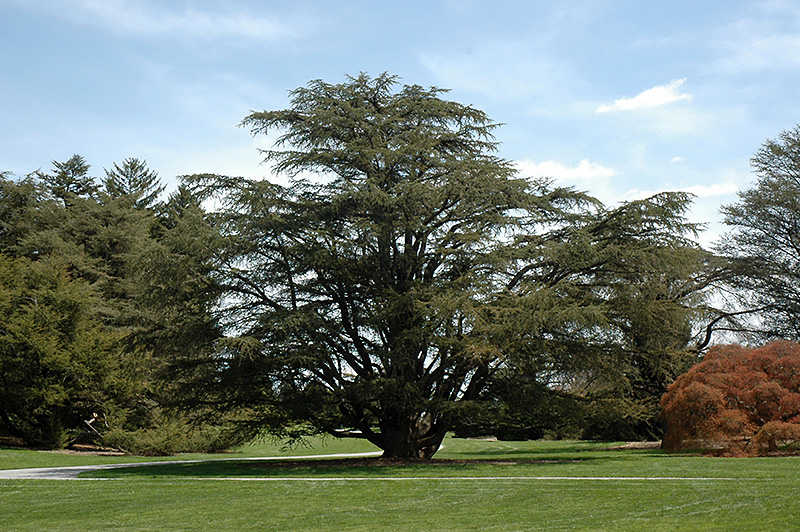Height: 50 feet
Spread: 40 feet
Sunlight:
![]()
Hardiness Zone: 6
Description:
One of the most pictruresque of all trees when mature, with a wide, spreading and almost pendant habit with open branching; leave a very large open space for this tree to reach its peak value in maturity
Ornamental Features
Atlas Cedar is primarily valued in the landscape for its characteristic tiered habit of growth. It has bluish-green evergreen foliage. The needles remain bluish-green throughout the winter.
Landscape Attributes
Atlas Cedar is an open evergreen tree with a strong central leader and a stunning habit of growth which features almost oriental horizontally-tiered branches. Its average texture blends into the landscape, but can be balanced by one or two finer or coarser trees or shrubs for an effective composition.
This is a relatively low maintenance tree, and usually looks its best without pruning, although it will tolerate pruning. It has no significant negative characteristics.
Atlas Cedar is recommended for the following landscape applications;
- Accent
- Vertical Accent
Planting & Growing
Atlas Cedar will grow to be about 50 feet tall at maturity, with a spread of 40 feet. It has a low canopy with a typical clearance of 5 feet from the ground, and should not be planted underneath power lines. It grows at a slow rate, and under ideal conditions can be expected to live for 80 years or more.
This tree should only be grown in full sunlight. It is very adaptable to both dry and moist growing conditions, but will not tolerate any standing water. It is not particular as to soil type or pH. It is somewhat tolerant of urban pollution, and will benefit from being planted in a relatively sheltered location. Consider applying a thick mulch around the root zone in winter to protect it in exposed locations or colder microclimates. This species is not originally from North America.

